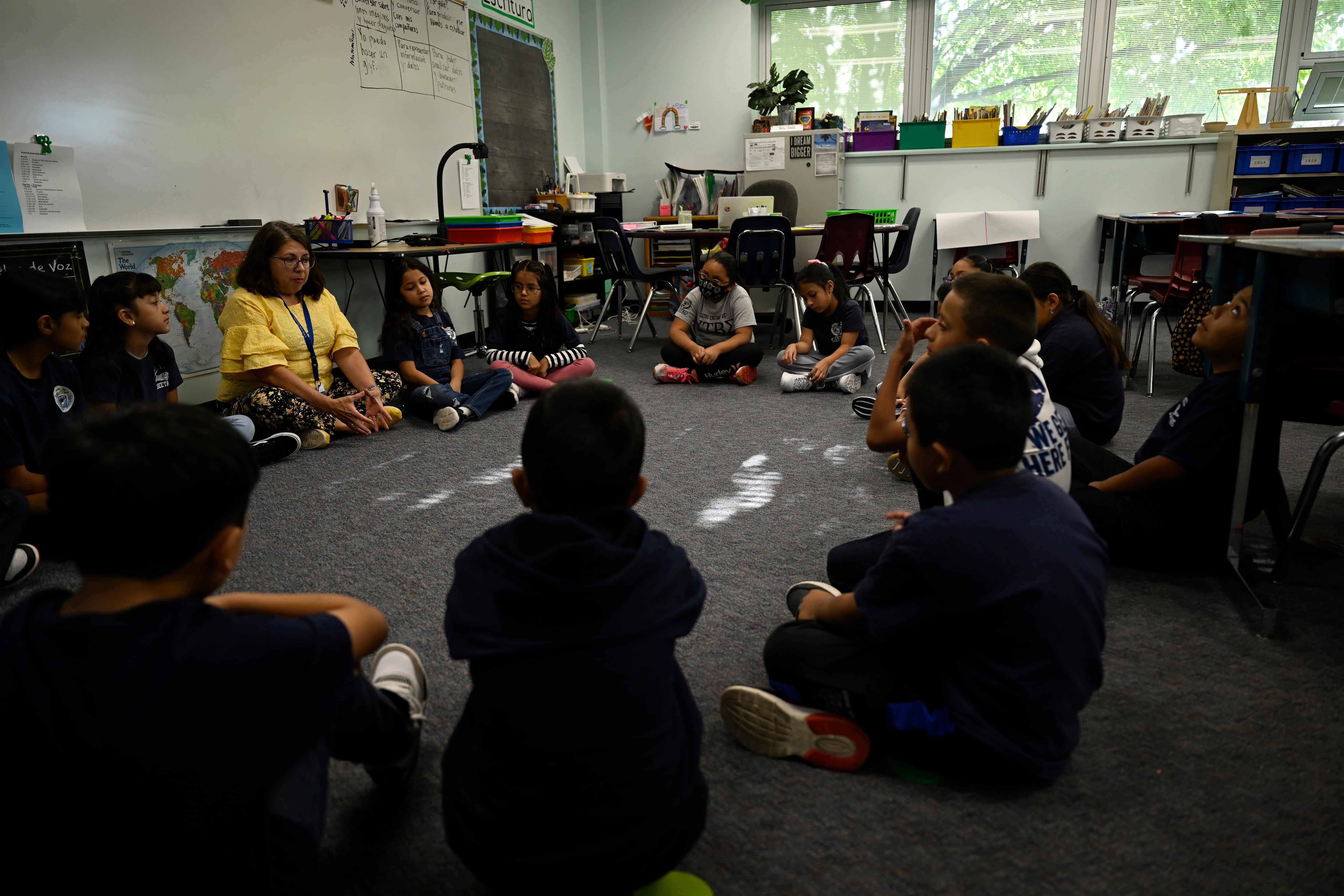Sign up for Chalkbeat Colorado’s free daily newsletter to keep up with education news from Denver and around the state.
Waitlists at many Denver public schools are shrinking as enrollment decreases in Colorado’s largest school district, according to school choice data from this past spring.
Five years ago, East High School had the longest waitlist for incoming ninth graders in all of Denver Public Schools with 226 students. This year, there were just 28 incoming ninth graders on East’s waitlist after the first round of school choice, an 87% decrease.
East had a hard year, with three shootings on or near the campus that resulted in two student deaths and sparked a districtwide reckoning on safety and the reintroduction of police in schools. But many other schools are seeing their waitlists shrink, too.
The district’s largest middle school, McAuliffe International, had the second-longest waitlist for incoming sixth graders five years ago with 183 students. This year, there were no students on McAuliffe International’s waitlist at the end of the first round of school choice.
Elementary schools have been hardest hit by declining enrollment, and many waitlists reflect that. In 2018, Steck Elementary had the longest waitlist for incoming kindergarteners with 144 students. This year, Steck’s waitlist was just 43 students.
In all, Chalkbeat counted 76 schools where waitlists shrank, often by large amounts, and 33 schools where waitlists grew, sometimes by just one or two students. The rest of DPS’ approximately 200 schools either don’t have a waitlist or don’t have comparable data.
School choice means students in DPS — and in districts across Colorado — can apply to attend any school, even if they don’t live within that school’s boundary. DPS invites families to submit school choice applications in two rounds.
The first round is the most competitive. This year, families submitted applications in January and February for schools this fall, ranking up to 12 choices. They learned in late April where their children were accepted. Generally, if there are more students than seats at a particular school, the district holds a lottery. Students who don’t get a seat are put on a waitlist.
DPS’ overall enrollment has been shrinking, dropping from about 93,350 students in 2019-20 to 88,760 last school year — a nearly 5% decrease in four years. And the district predicts the downward trend will continue due to lower birth rates and higher housing costs.
Laurie Premer, the district’s director of enrollment services, said in an interview that the shrinking waitlists are likely a symptom of declining enrollment. But there could be other reasons, too, she said, including that families are happier with their assigned boundary schools.
The percentage of DPS students who participate in school choice has held steady over the past five years at about 44%, according to a district report.
A few schools are bucking the trend of shrinking waitlists. The sixth grade waitlists at Merrill and Morey middle schools were notably longer after the first round of choice this year than in 2018. Morey’s grew more than 20 times as long from 2 to 47 students.
Northfield High School had the longest waitlist in the district with 278 incoming ninth graders waiting for a seat. That’s a 35% increase from 2018, when the waitlist was at 205 students.
The searchable database below shows how many students in kindergarten, and sixth and ninth grades were on each school’s waitlist at the end of the first round of school choice this year. The database also shows how many students were accepted at each school.
There are several caveats to the data, which are detailed below the database.
Here are the caveats:
The count of accepted students includes both students who applied through school choice and those who live in the school’s boundary and will likely attend. Students who do not submit a school choice application are enrolled at their boundary schools.
The number of accepted students may look artificially low at some schools that span grade levels, such as K-8 or 6-12 schools. That’s because students who already attend that school don’t have to apply to stay for the next level. For instance, an 8th grader at a 6-12 school wouldn’t have to apply to attend the school in 9th grade, even if they live outside the boundary.
A single student can be on multiple waitlists. A student who was accepted to her third-choice school would be waitlisted at her first- and second-choice schools.
The waitlists will change by fall as students move in and out of the city or change their minds. DPS’ second round of school choice is now open and runs through Aug. 31.
Melanie Asmar is a senior reporter for Chalkbeat Colorado, covering Denver Public Schools. Contact Melanie at masmar@chalkbeat.org.







